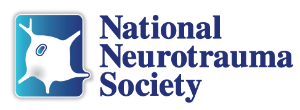Main Menu
Description & Objectives S06
S06: Radiological-Pathological Correlations in TBI







Chair: David Brody, MD
S06.01 - Diffusion MRI as a Biomarker in TBI, Correlations, Conclusions, and Caveats
Matthew Budde, PhD - Medical College of Wisconsin
S06.02 - Visualizing Axonal Pathology with MRI Connectomics:
Toward a Multimodal Autopsy for TBI
Brian Edlow, PhD - MGH/Harvard University
S06.03 - Pathology of Acute Traumatic Microbleeds Found on MRI
Larry Latour, PhD - National Institute of Health
S06.04 - Radiological-Pathological Correlations in Ex Vivo Human Chronic Traumatic Encephalopathy
Laurena Holleran, PhD - Washington University
Session Description
Neuroimaging has revolutionized the field of traumatic brain injury research and clinical care. However, the interpretation of neuroimaging findings is not always clear. As more advanced neuroimaging methods are developed, the problem grows steadily more complex. For this reason, radiological-pathological correlation analyses provide foundational cornerstone research studies, critical for rational advancement in the field. Importantly, recent calls for imaging-based inclusion/exclusion criteria for clinical trials and imaging-based pharmacodynamic assessments of therapeutic efficacy make it all the more critical to optimize the use of neuroimaging in TBI. However, despite the importance of the topic, there have been relatively few methodologically rigorous studies in TBI, and those that have been performed have largely involved animal models of moderately severe TBI; few studies have covered models of concussive TBI or assessed human brain tissue. In this session we will describe ongoing efforts to advance the field in both depth and breadth with improved quantitative rigor, new types of imaging, studies of human tissue as well as animal modes, and a wider range of injury severities. Talks will feature work from new investigators bringing creative ideas to the problem, and a vigorous discussion of outstanding unsolved issues will also be presented.
Learning Objectives
At the conclusion of this session, attendees will be able to:
- Understand the diversity of advanced neuroimaging methods being applied to TBI research
- Describe the major challenges in radiological-pathological correlations
- Appreciate the complementary strengths and weaknesses of performing radiological-pathological correlations in animal models vs human tissue
